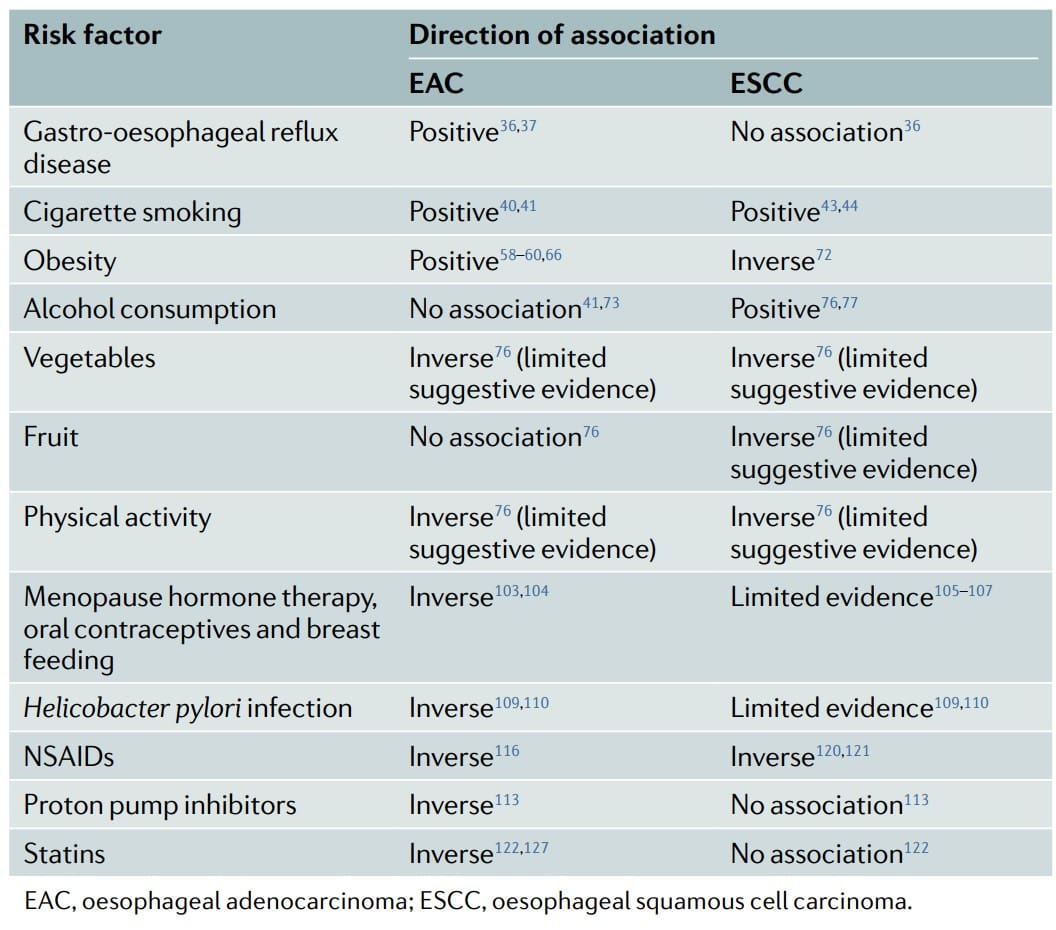Review of epidemiology of esophageal cancer and Barrett's
This Review by Dr. Thrift at Baylor updates the trends in the incidence of esophageal cancer (both histologic types) and summarizes current knowledge of its risk factors.

Nat Rev Gastroenterol Hepatol. 2021 Jun;18(6):432-443.
doi: 10.1038/s41575-021-00419-3. Epub 2021 Feb 18. PMID: 33603224
Global burden and epidemiology of Barrett oesophagus and oesophageal cancer
Thrift AP
Abstract
Oesophageal cancer is a global health problem; in 2018 there were more than 572,000 people newly diagnosed with oesophageal cancer worldwide. There are two main histological subtypes of oesophageal cancer, oesophageal adenocarcinoma (EAC) and oesophageal squamous cell carcinoma (ESCC), and there has been a dramatic shift in its epidemiology. While the incidence of EAC and its precursor lesion, Barrett oesophagus, has increased in Western populations over the past four decades, the incidence of ESCC has declined in most parts of the world over the same period. ESCC still accounts for the vast majority of all oesophageal cancer cases diagnosed worldwide each year. Prognosis for patients with oesophageal cancer is strongly related to stage at diagnosis. As most patients are diagnosed with late-stage disease, overall 5-year survival for oesophageal cancer remains <20%. Knowledge of epidemiology and risk factors for oesophageal cancer is essential for public health and clinical decisions about risk stratification, screening and prevention. The goal of this Review is to establish the current epidemiology of oesophageal cancer, with a particular focus on the Western world and the increasing incidence of EAC and Barrett oesophagus.




